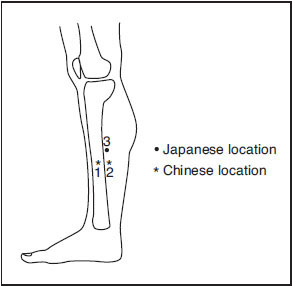The development of prolapses of various organs is a natural human condition. Prolapses develop from a weakened physical condition, age, gravity, excess weight, various childbirth situations, organ removal, or organ weakness. In Chinese medicine, prolapses are primarily viewed as being related to sinking spleen qi. In Japanese theory, this concept is expressed in slightly different ways, ultimately as being related to weak immunity (a component of which is spleen qi, our source of post-natal nourishment), as well as kidney qi, vacuity. The essential Oriental medical treatment plan revolves around raising the yang, or the qi of the spleen.
Prolapses may occur in several parts of the body. Common sites involve the rectum, bladder, uterus, and intestines. Incompetent sphincters that allow for acid reflux disease, hiatal hernia, inguinal hernias, and even mitral valve prolapse of the heart fall within the domain of prolapses.
Patients may come to be treated for these conditions as their major complaint, or the prolapse may be a symptom that is part of their medical history. In any event, prolapses can be addressed with an Oriental treatment strategy if the prolapse is not at the point where it needs to be repaired surgically. The modalities most suited for this condition include needles, moxibustion, and the TDP lamp (therapeutic infrared lamp).
While each type of prolapse has specific points that are clinically effective for its specific differentiation, a core outline of points that one could use to treat prolapses, and then augment or modify based on signs and symptoms, includes KI-27 (shu fu), ST-13 (qi hu), GV-20 (bai hui), LR-5 (li gou), and a special group of points known as the naganos. Let us look at the unique energetics of this group of points and discusstheir needling techniques.
 Energetics
Energetics
Kidney 27(shu fu) is the last point on the kidney channel. Energetically, it is classified as the shu of shu points. Remember that according to Oriental medical theory, a shu point can monitor and treat aberrations of the qi and blood. Being the shu of shu points means it is very important, a master shu point so to speak. It has the energetic effect of adjusting the qi and blood of all the organs. KI-27 is located 2 cun lateral to the ren channel, on the lower border of the clavicle. To determine the need to needle this point, rub each point separately for about 3 seconds in a transverse manner. The point typically elicits an achy sensation, indicating that it could benefit from treatment.
Stomach 13 (qi hu) is located close to KI-27. It is found 4 cun lateral to the ren channel on the lower border of the clavicle. In Japanese acupuncture, ST-13 is considered the most important point in the treatment of prolapses, analogous to GV-20 in Chinese acupuncture. A loose translation of ST-13’s name in Japanese is “cause a reversal,” hence its applicability to the treatment of prolapse to reverse the collapsed condition. This translation is somewhat similar to the Chinese translated name, “Qi’s Household,” which designates that ST-13 is a site of intersection of the stomach, large intestine, triple warmer, small intestine, and many other divergent channels, hence its ability to raise the yang.
In Chinese acupuncture Governing Vessel 20(bai hui) is perhaps the most well known point for the treatment of prolapse. Located 5 cun within the anterior hairline on the governing vessel channel, it has the ability to raise the yang, especially with the use of moxibustion.
Liver 5 (li gou) is an additional point that can be treated, especially if the prolapse is liver-related, as in the case of inguinal hernia or uterine prolapse. As the luo point of the liver channel, LR-5 can be used as a longitudinal luo to stimulate the organ and channel of the liver. The liver channel encircles the external genitalia, connects to the uterus, and dominates the tendons, muscles, ligaments, and nerves. Liver 5 has three potential locations, which are shown in Figure 12.1 and are described below in the section on needling.

Stay updated, free articles. Join our Telegram channel

Full access? Get Clinical Tree





